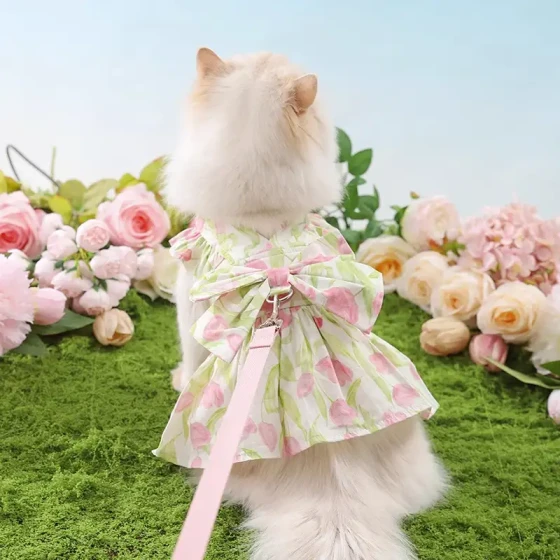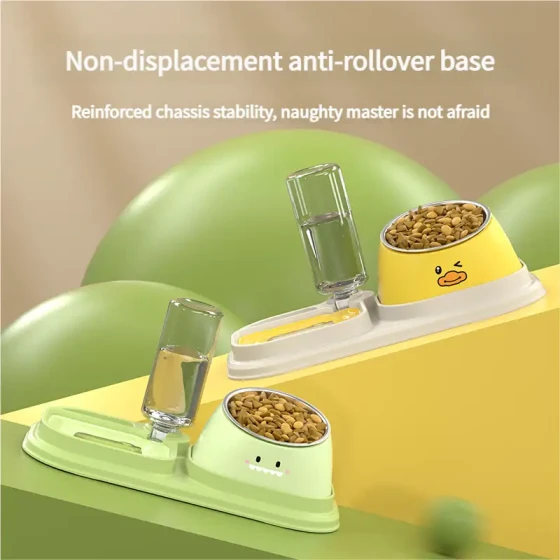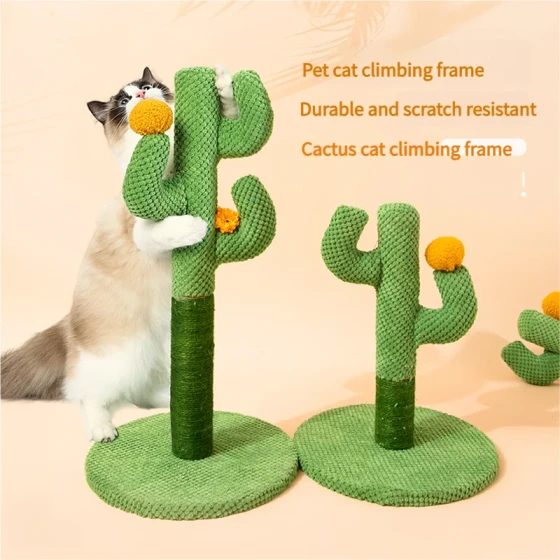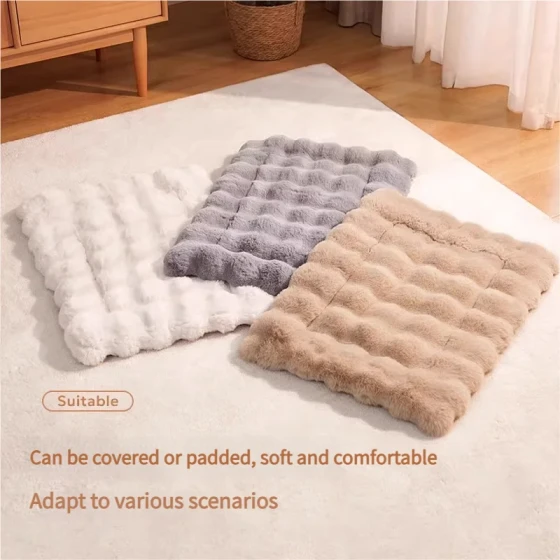Cat Frequently Kneading_Mystery Behind the True Meaning of Cat Kneading Behavior
Cat “kneading,” a cute-sounding term, describes the behavior where cats rhythmically press soft objects (such as your thigh, blanket, or pillow) alternately with their front paws, sometimes accompanied by purring and a happy expression. This is not an abnormal act, but an instinctive behavior inherent in felines, usually indicating they feel extremely relaxed, comfortable, and satisfied, just like when they were kittens cuddling next to their mother nursing.
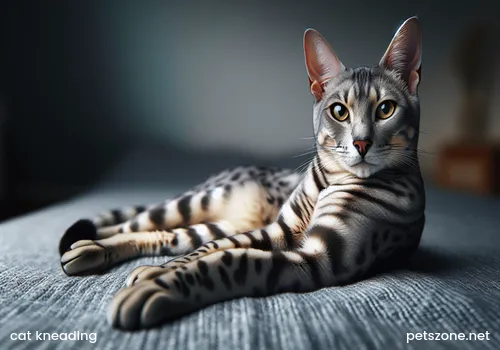
Cat Kneading: A “Childhood Memory” Across Ages
Cat kneading, also called “dough kneading” or “paw pressing,” is a cute moment witnessed by many cat lovers. This behavior traces back to their nursing period beside their mother cat. Kittens instinctively press gently around their mother’s mammary glands with their small paws while nursing, stimulating milk secretion, which not only helps them get more food but also establishes a deep emotional bond with the mother cat. This warm, safe, and satisfying feeling is deeply embedded in cats’ genes, and even as adults, when they feel extremely relaxed and happy, this “childhood memory” is awakened, exhibited as kneading behavior.
It can be said that kneading is a unique way for cats to express inner calmness and happiness. It’s like humans humming a tune unconsciously or lightly tapping a table when relaxed—an unconscious, self-soothing behavior.
Unveiling Four “Little Thoughts” Behind Cat Kneading
Behind cat kneading, there are actually various “little thoughts.” Let’s delve into the meanings of these adorable signals.
1. Returning to Infancy, Seeking Ultimate Security
This is the most common and important reason for cat kneading. When cats are in a safe, warm, and loving environment—such as cuddled in their owner’s arms or lying on a soft, comfortable blanket—they naturally simulate the feeling of being next to their mother cat in infancy through kneading. At such times, they emit gentle purring sounds, have half-closed eyes, as if returning to a carefree childhood. This shows that the cat fully trusts the environment and owner, feels loved and protected, and their heart reaches the highest state of “peaceful time.”
2. Expressing Affection and Intimacy
If your cat kneads on you, congratulations, this usually is one of their highest ways to show love and closeness. They see you as a “super-sized mother cat” or a fully trusted companion. Through kneading, they’re telling you: “Human, I love you, I feel especially comfortable and safe with you!” This behavior is a direct reflection of their deep affection for the owner, much more enthusiastic than those aloof “cat masters.”
3. Marking Territory, Declaring “Sovereignty”
Cat paws are covered with glands that can secrete unique pheromones only cats can smell. When they knead, these pheromones are released onto the object being pressed. It’s like they are declaring: “This is my territory! This blanket (or person) has been stamped by me, no one else can take it!” For cats, this marking is an important way to build security and territorial awareness. So when your cat kneads on you, in some way it’s saying: “You are mine!”
4. Preparing to Rest, Creating a Cozy Nest
In the wild, felines press down grass or soil before sleeping to flatten them, creating a comfortable, private, and safe resting place. Although domestic cats no longer worry about their habitat, this instinct remains. When they prepare to nap or sleep, kneading helps them “massage” blankets, cushions, and other soft items to make them more fitting and comfortable, facilitating better sleep. It’s like humans fluffing pillows or arranging blankets before sleeping.
5. Relieving Stress and Anxiety (In Rare Cases)
Although kneading is mostly a positive signal, in rare cases, if a cat is stressed, anxious, or uneasy, it may use this repetitive behavior to self-soothe and relieve emotions. This is similar to humans unconsciously touching hair or shaking legs when nervous. If your cat, besides kneading, also shows symptoms like loss of appetite, hiding, or excessive grooming, then the kneading might not be simply “comfortable,” but a sign that needs your attention and comfort.
6. Special Expression During Heat (Unspayed Female Cats)
For unspayed female cats, kneading behavior may become more frequent and obvious during heat cycles, often accompanied by yowling, arching back, rubbing against people, and other signs of estrus. This is a natural reaction to hormonal changes in their body and a way to send signals to male cats.
Is It Normal If a Cat Doesn’t Knead?
Some cats may never knead in their lifetime, or only rarely show this behavior, and this is completely normal. Each cat’s personality, upbringing, and expression style differ. Just as not all people like to sing, not all cats express satisfaction and love through kneading. As long as your cat is healthy, mentally sound, lively, and has a normal appetite, there’s no need to worry if it doesn’t knead.
How to Deal with Cat Kneading?
When your cat kneads on you, it’s usually a good thing, but if their claws aren’t trimmed, it can sometimes feel a little “painful.” You can:
- Enjoy the Love: Most times, it’s a cat’s trust and love for you. Gently pet them or talk to them to let them know you feel their affection.
- Trim Nails: Regularly trimming your cat’s nails can prevent scratches while kneading. If you are a beginner, ask a pet store or vet for help.
- Provide Alternatives: If kneading on you is too painful, offer a soft blanket, pillow, or a dedicated cat bed and guide them to knead there.
- Avoid Punishment: Kneading is an instinctive behavior; punishing them might confuse and upset them, harming your relationship.
Frequently Asked Questions
Q1: Why do cats purr while kneading?
A1: Cats purr when extremely relaxed and satisfied, usually occurring simultaneously with kneading. Both are signs that the cat feels safe and happy, similar to a kitten nursing near its mother.
Q2: Is it normal for adult cats to knead?
A2: Completely normal. Kneading is a behavior throughout a cat’s life; adult cat kneading usually means they feel very relaxed, comfortable, or are expressing affection to you.
Q3: What if my cat bites while kneading?
A3: If your cat bites during kneading, it may be overexcited play or leftover oral phase behavior from early weaning. You can gently remove your hand, distract them with toys, or stop them when moving to bite and offer alternatives. Regular nail trimming can also reduce injuries.
Q4: Why does my cat only knead on me?
A4: This shows your cat trusts and depends on you very much, viewing you as the closest and safest presence. It’s a very high compliment and you should feel honored.
Q5: Is drooling normal when a cat kneads?
A5: Some cats salivate during kneading due to extreme relaxation, which is normal. Just like some people drool when seeing delicious food, cats may drool unconsciously when thoroughly enjoying themselves.
Conclusion
Cat kneading, a seemingly simple action, carries their most sincere emotional expression towards the world, family, and owner. It tells us how safe and happy this fluffy little fellow feels by your side. Next time your cat “kneads dough” on you, why not pause your tasks and enjoy this special affection from your “feline friend”!
